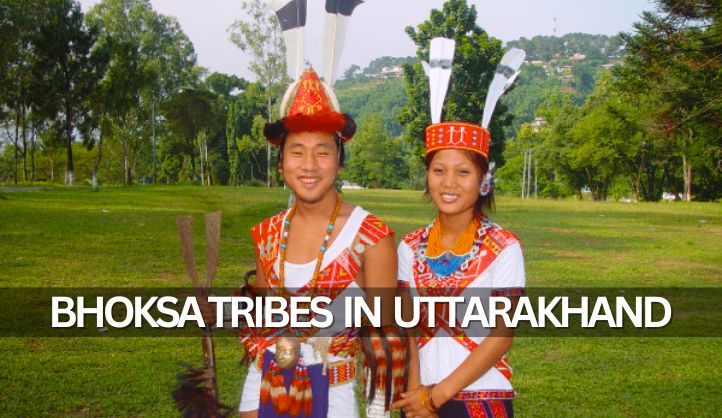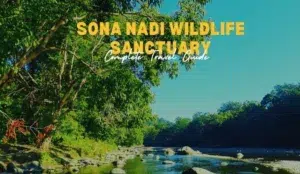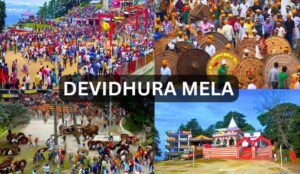Uttarakhand, with its diverse ethnic and cultural landscape, is home to a multitude of indigenous tribes, each with its unique heritage and traditions. Among these are the Bhoksa tribes, a vibrant community whose history and way of life offer fascinating insights into the region’s cultural tapestry. This blog explores the Bhoksa tribes of Uttarakhand, shedding light on their traditions, lifestyle, and the challenges they face in the modern era.
Who Are the Bhoksa Tribes?
The Bhoksa tribes, also known as the Buxa or Bhuxas, are an indigenous ethnic group primarily residing in the hilly terrains of Uttarakhand, particularly in the districts of Pauri Garhwal and Champawat. They are also found in parts of neighboring Uttar Pradesh and the state of Himachal Pradesh. The Bhoksa people speak a language belonging to the Tibeto-Burman family, which reflects their historical connections with the broader Himalayan region.
Historical Background
The origins of the Bhoksa tribes are somewhat obscure, but they are believed to be descendants of the Tibeto-Burman migrations that flowed into the Indian subcontinent centuries ago. Over time, they have established themselves as a distinct community with their traditions and way of life. Historically, the Bhoksa have been known for their expertise in agriculture, weaving, and traditional craftsmanship.
Traditional Lifestyle and Culture
1. Agriculture and Livelihood
The Bhoksa people traditionally rely on agriculture as their primary source of livelihood. They cultivate a variety of crops, including rice, maize, and millet. Their farming practices are adapted to the hilly terrain, and they often use traditional methods of terracing to make the most of the available land.
2. Housing and Architecture
Bhoksa homes are typically constructed from locally sourced materials such as wood, stone, and bamboo. Their traditional houses are designed to withstand the region’s climatic conditions and are often built on stilts to protect against dampness and pests. The architecture reflects their adaptation to the mountainous environment and their emphasis on practicality.
3. Dress and Ornaments
The traditional attire of the Bhoksa people is colorful and vibrant, often made from hand-woven fabrics. Men typically wear a dhoti (a type of traditional wrap) with a kurta (a long shirt), while women don a variety of traditional dresses, often embellished with intricate embroidery. Bhoksa women are known for their beautiful silver jewelry, including necklaces, bangles, and earrings, which are an integral part of their cultural attire.
4. Festivals and Rituals
Festivals play a crucial role in Bhoksa culture, with celebrations often centered around agricultural cycles, seasonal changes, and religious rituals. Key festivals include:
- Basant Panchami: Celebrated to mark the onset of spring and the beginning of the agricultural season.
- Holi: The festival of colors, which signifies the victory of good over evil and is celebrated with vibrant colors and traditional songs.
- Diwali: Known as the Festival of Lights, it is celebrated with the lighting of lamps and fireworks.
Social Structure and Customs
The social structure of the Bhoksa tribes is organized into clans, each with its own set of customs and traditions. The community is led by elders who are respected for their wisdom and experience. Traditional governance is often based on consensus, with decisions made collectively by the community members.
Marriage customs among the Bhoksa people involve elaborate ceremonies and rituals. Arranged marriages are common, and the process typically includes a series of negotiations between families. Dowries and gifts are exchanged as part of the marriage arrangement.
Contemporary Challenges
While the Bhoksa tribes have managed to preserve many of their traditional practices, they face several contemporary challenges:
- Modernization: The influx of modern amenities and lifestyles is gradually impacting traditional ways of life, leading to a loss of cultural practices.
- Education and Employment: Limited access to education and employment opportunities in remote areas poses a challenge for the younger generation.
- Environmental Issues: Changes in land use and environmental degradation affect traditional agricultural practices and livelihoods.
Preservation of Culture
Efforts are being made to preserve and promote Bhoksa culture through various initiatives. Organizations and local communities are working to document traditional practices, promote sustainable agriculture, and provide educational opportunities. Cultural festivals and fairs also serve as platforms to showcase Bhoksa heritage and foster cross-cultural understanding.
Some Other Tribes of Uttarakhand
Uttarakhand, with its diverse geography and rich cultural tapestry, is home to several indigenous tribes, each with unique traditions and ways of life. Here’s an overview of some of the prominent tribes of Uttarakhand:
Tharu Tribe
- The Tharu are known for their rich folklore, dance, and music.
- They practice agriculture, particularly cultivation of rice, and are skilled in traditional crafts.
- Festivals like “Holi” and “Tihar” are celebrated with distinctive rituals and performances.
- Traditionally, the Tharu live in small, self-sustaining villages with homes made from mud and thatch.
- They have a close relationship with the forest and wildlife, often using traditional knowledge for medicinal and agricultural purposes.
Raji Tribe
- The Raji tribe is known for its traditional dance forms and oral storytelling.
- They celebrate festivals such as “Magh Mela” and “Holi” with special rituals.
- Traditionally, the Raji are forest dwellers and practice shifting agriculture.
- Their lifestyle is closely intertwined with nature, and they are skilled in using forest resources for their daily needs.
Rathia Tribe
- The Rathia tribe is known for their unique traditional customs, including folk dances and songs.
- Their festivals often include community feasts and ceremonies that reflect their deep connection to nature.
- The Rathia people engage in agriculture and animal husbandry.
- Their homes are typically made from locally sourced materials, reflecting their integration with the environment.
Kumaoni and Garhwali Tribes
- Both communities have rich cultural traditions, including unique dance forms, music, and festivals.
- Kumaoni people are known for their traditional attire, which includes vibrant colors and intricate patterns.
- Garhwali people have a distinct cultural heritage with traditional practices and celebrations.
- Both communities practice agriculture as their primary occupation, growing crops like wheat, rice, and pulses.
- They live in terraced houses adapted to the hilly terrain of Uttarakhand.
Jaunsari Tribe
- The Jaunsari tribe has a rich tradition of folk music, dance, and storytelling.
- They celebrate festivals such as “Magh Mela” with traditional ceremonies and community gatherings.
- The Jaunsari people practice subsistence agriculture, growing crops like barley, maize, and potatoes.
- Their homes are designed to withstand the cold climate of the region and are often built using stone and wood.
Gaddi Tribe
- The Gaddi tribe is known for its pastoral lifestyle and sheep rearing.
- They celebrate various festivals, including “Baisakhi” and “Lohri”, with traditional music and dance.
- The Gaddi people lead a semi-nomadic lifestyle, moving with their livestock between different altitudes according to the season.
- Their homes are portable, designed to be easily assembled and disassembled as they move.
Conclusion
The Bhoksa tribes of Uttarakhand embody a rich cultural heritage that reflects their deep connection to the Himalayan landscape. Their traditions, from agriculture and craftsmanship to festivals and social customs, provide a vivid picture of life in the mountains. As modernization and environmental changes continue to impact their way of life, it is crucial to support efforts to preserve and celebrate their unique heritage. By learning about and appreciating the Bhoksa tribes, we can contribute to the preservation of their cultural legacy and support their journey into the future.
FAQs About the Bhoksa Tribes of Uttarakhand
Who are the Bhoksa tribes?
The Bhoksa tribes, also known as the Buxa or Bhuxas, are an indigenous ethnic group primarily residing in the hilly regions of Uttarakhand, particularly in Pauri Garhwal and Champawat districts. They also inhabit parts of neighboring Uttar Pradesh and Himachal Pradesh.
What is the origin of the Bhoksa tribes?
The Bhoksa tribes are believed to be descendants of Tibeto-Burman migrations into the Indian subcontinent. They have established themselves as a distinct community with their own cultural practices and way of life over centuries.
What language do the Bhoksa people speak?
The Buksa people speak a language belonging to the Tibeto-Burman family. This language reflects their historical connections with the broader Himalayan region.
What are the traditional livelihoods of the Bhoksa tribes?
The Bhoksa people traditionally rely on agriculture as their primary livelihood. They cultivate crops such as rice, maize, and millet. They have adapted their farming practices to the hilly terrain, using traditional methods like terracing.
How are Buksa homes constructed?
Buksa homes are typically built from locally sourced materials such as wood, stone, and bamboo. They are often constructed on stilts to protect against dampness and pests, and their design reflects the practical needs of the mountainous environment.
What is the traditional attire of the Buksa people?
Buksa’s traditional attire is colorful and vibrant. Men usually wear a dhoti with a kurta, while women wear various traditional dresses adorned with intricate embroidery. Buksa women are known for their silver jewelry, including necklaces, bangles, and earrings.





